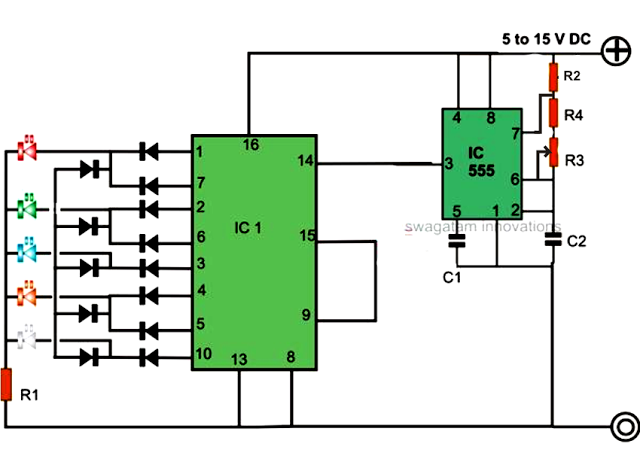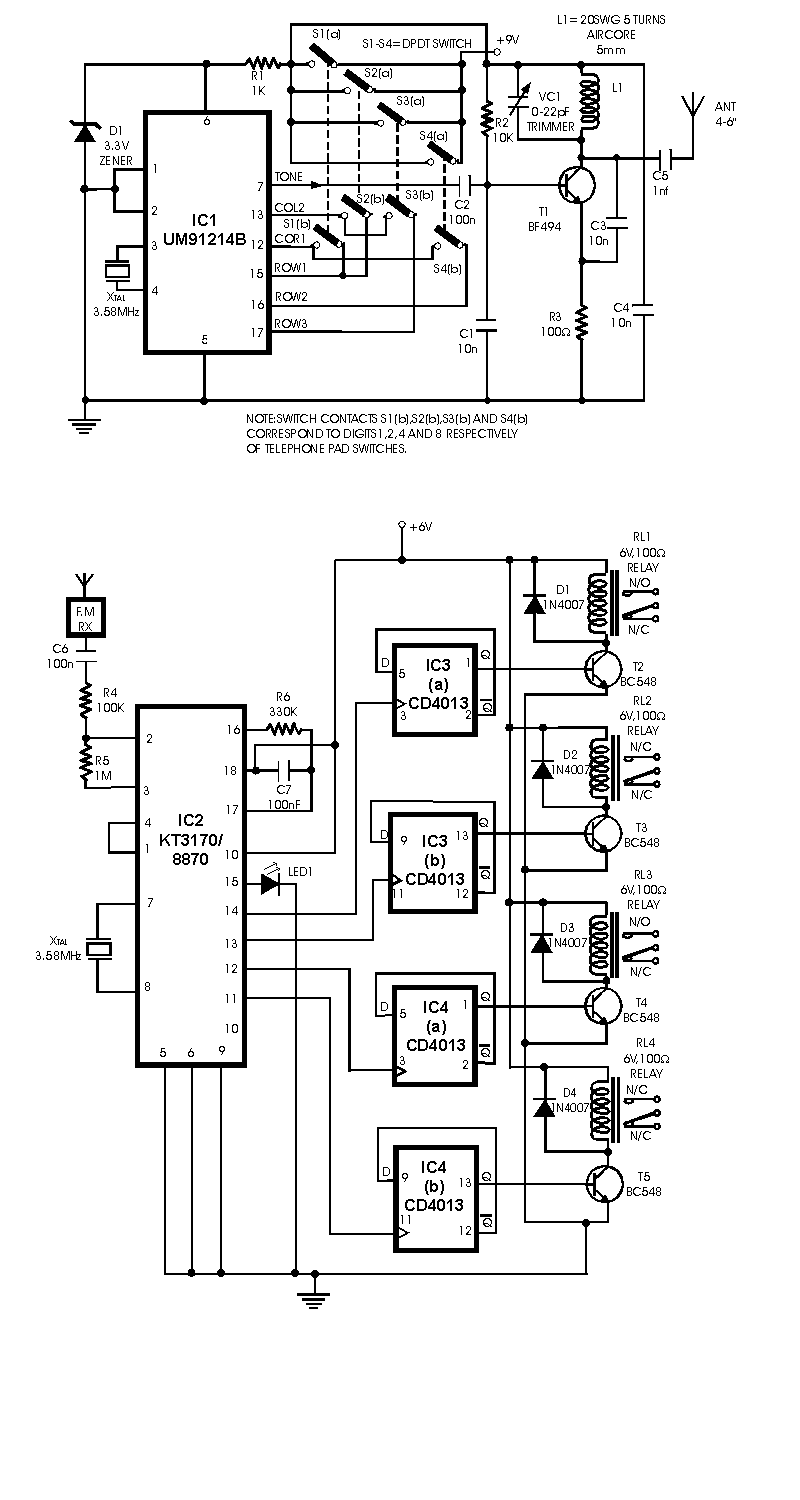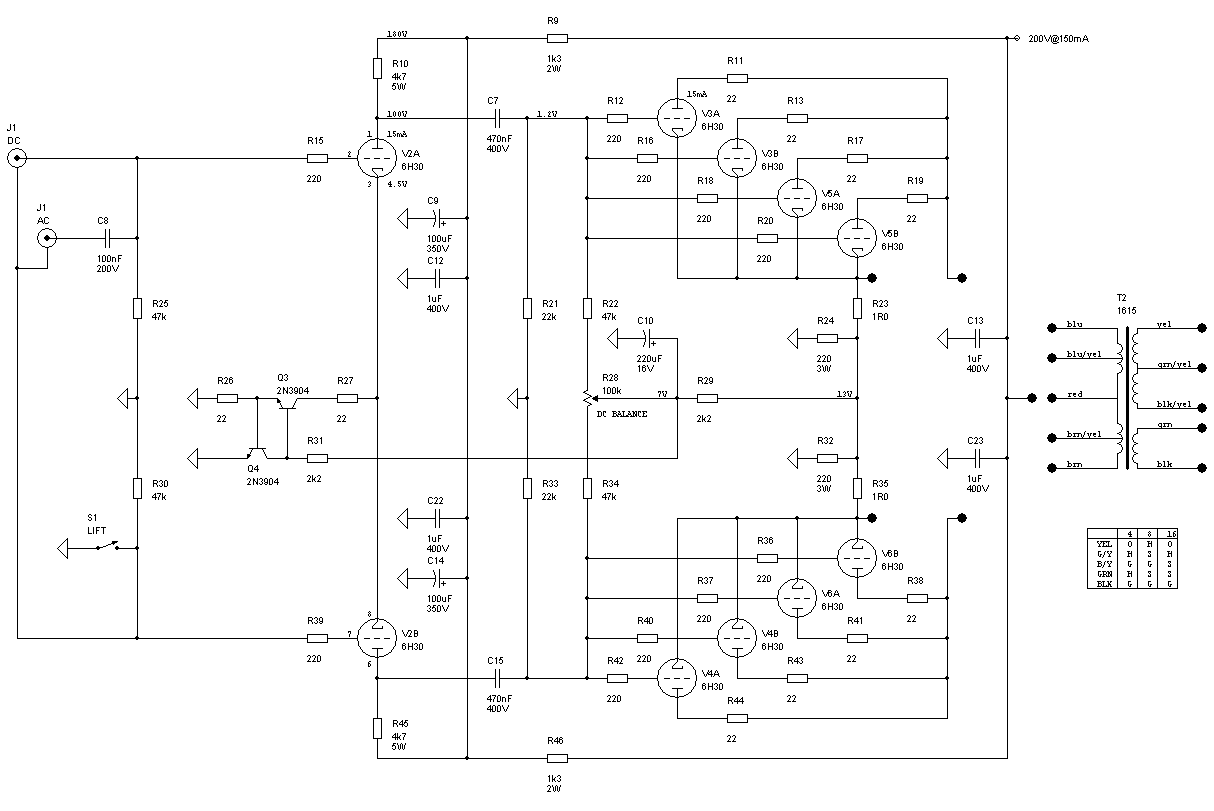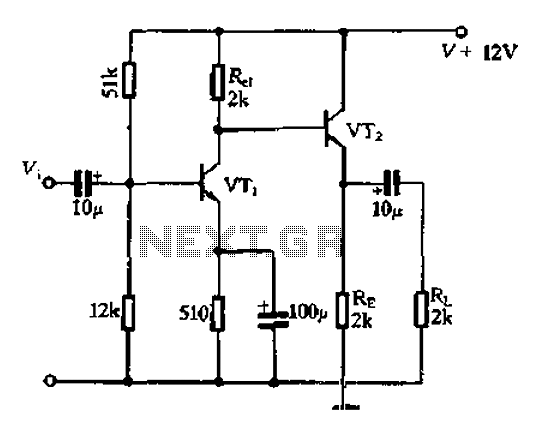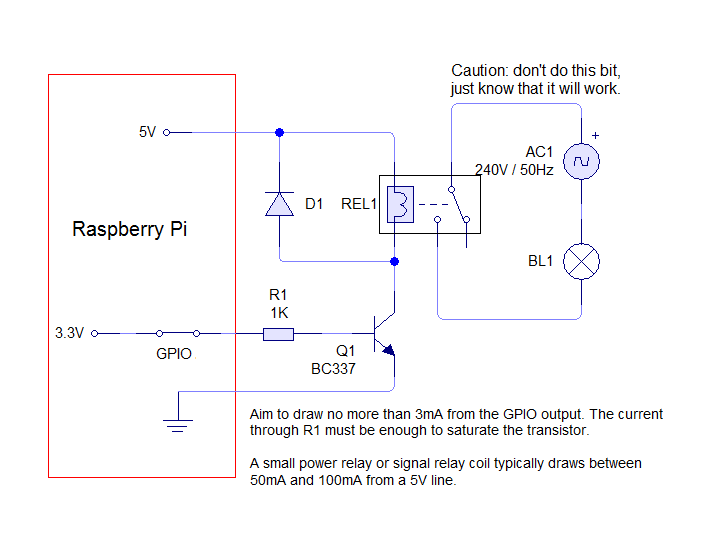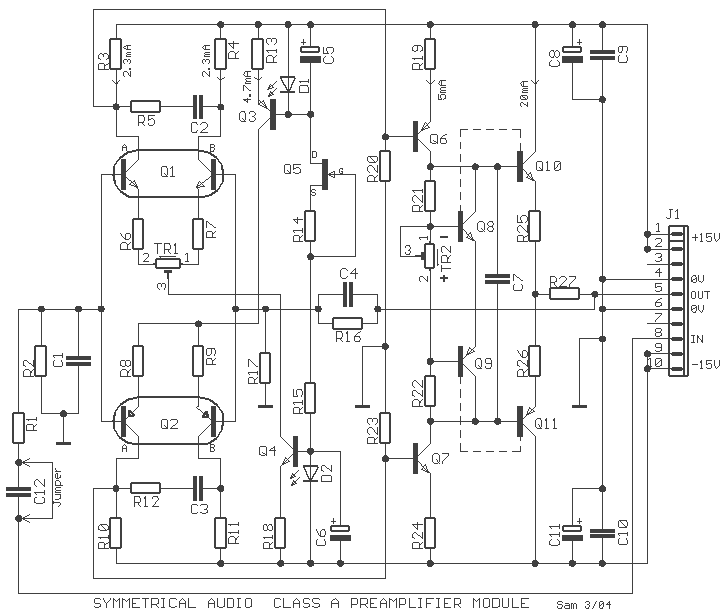
A 4 Watt Amplifier Portable RadioCircuit Design using TDA1011
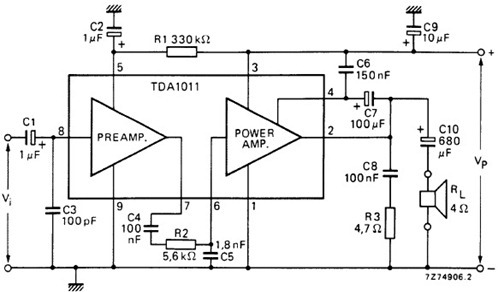
The following schematic illustrates the design of a 4 Watt Amplifier Circuit Diagram intended for portable radio applications, utilizing the TDA1011 integrated circuit from Philips Semiconductor.
The 4 Watt Amplifier Circuit is designed to provide audio amplification in portable radio devices, ensuring sufficient power output for driving small speakers. The TDA1011 is a high-performance audio amplifier IC that offers low distortion and high efficiency, making it suitable for battery-operated applications.
The circuit typically includes the following components: the TDA1011 IC, resistors, capacitors, and a power supply. The input signal is fed into the amplifier through the input capacitor, which blocks any DC component while allowing the AC audio signal to pass. The gain of the amplifier can be set using external resistors connected to the feedback loop, allowing for customization based on the application requirements.
Power supply considerations are crucial; the TDA1011 operates efficiently within a specified voltage range, typically between 9V to 15V. Bypass capacitors are used near the power supply pins of the IC to filter out any noise and ensure stable operation.
The output stage of the amplifier is designed to drive a speaker directly, often with a series output capacitor to block DC voltage from reaching the speaker. This configuration helps to protect the speaker and improve sound quality.
Thermal management is also an essential aspect, as the amplifier can generate heat during operation. Adequate heat sinking or thermal pads may be necessary to dissipate heat and maintain optimal performance.
Overall, this amplifier circuit is ideal for portable radio applications, providing an effective solution for audio amplification while maintaining low power consumption and high sound quality.The following schematic depicts the design of a 4 Watt Amplifier Circuit Diagram for portable radio application using TDA1011 from Philips Semiconductor. The.. 🔗 External reference
The 4 Watt Amplifier Circuit is designed to provide audio amplification in portable radio devices, ensuring sufficient power output for driving small speakers. The TDA1011 is a high-performance audio amplifier IC that offers low distortion and high efficiency, making it suitable for battery-operated applications.
The circuit typically includes the following components: the TDA1011 IC, resistors, capacitors, and a power supply. The input signal is fed into the amplifier through the input capacitor, which blocks any DC component while allowing the AC audio signal to pass. The gain of the amplifier can be set using external resistors connected to the feedback loop, allowing for customization based on the application requirements.
Power supply considerations are crucial; the TDA1011 operates efficiently within a specified voltage range, typically between 9V to 15V. Bypass capacitors are used near the power supply pins of the IC to filter out any noise and ensure stable operation.
The output stage of the amplifier is designed to drive a speaker directly, often with a series output capacitor to block DC voltage from reaching the speaker. This configuration helps to protect the speaker and improve sound quality.
Thermal management is also an essential aspect, as the amplifier can generate heat during operation. Adequate heat sinking or thermal pads may be necessary to dissipate heat and maintain optimal performance.
Overall, this amplifier circuit is ideal for portable radio applications, providing an effective solution for audio amplification while maintaining low power consumption and high sound quality.The following schematic depicts the design of a 4 Watt Amplifier Circuit Diagram for portable radio application using TDA1011 from Philips Semiconductor. The.. 🔗 External reference
